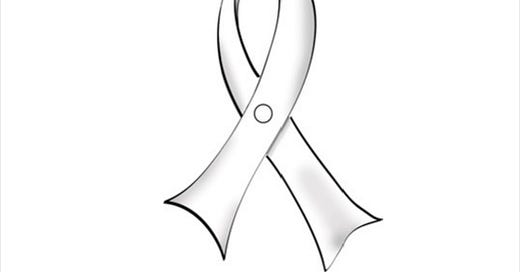Using water and compute cycles to save lungs and lives 🗣️
How a new AI-based tool from Australia, being piloted in the UK, is helping to diagnose lung cancers earlier (audio; 6:26)
AI has great potential for good. But its use has monetary and ecological costs which can’t be ignored. And much of its current use, especially for generative AI, is frankly wasted on creating slop that never gets used and adds no value to the world. So it’s always cool to find a new exception where AI adds value. Here’s news about an AI tool I discovered today that hit close to home.
Got Lungs? You’re At Risk (too)
For decades, we have desperately needed better diagnostic tools for lung cancers. Research remains woefully under-funded, and lung cancer survival rates still suck today almost as badly as they did 20 years ago.
More people of all genders die from lung cancer each year than from any other type of cancer. (There are more cases of other cancers, like breast and prostate. But because they have better detection and treatment, far fewer people die.)
A key reason lung cancer is so often fatal is that we haven’t had good ways to detect it early. Some numbers:
“Lung cancer is the UK’s biggest cancer killer, with nearly 35,000 deaths in the UK attributed to the disease annually, accounting for one in five (21%) of all cancer deaths. Six in ten people will survive more than five years if lung cancer is diagnosed at the earlier stages, but this falls to just one in ten for those diagnosed at the latest stage.”
How And Why Do I Know About This?
20 years ago, here in the US, my husband Dan got an initial chest X-ray when he started having shortness of breath. The X-ray report didn’t flag any cancer risk.
When Dan was finally diagnosed a year later, his oncologist told us chest X-rays weren’t good enough to rely on, and that by the time a radiologist can see a lung cancer tumor on an X-ray, it’s late, and the cancer has probably already spread. And Dan’s had. 😢
It’s still recognized today that chest X-rays often miss small lung cancers. But many doctors (non-oncologists, like Dan’s primary doctor) rely on them. They’re more readily available and they’re less expensive than CT scans. So finding a way to make chest X-rays more accurate for diagnosing lung cancer (and other lung conditions) early would be a boon.
Late diagnosis was fatal for my Dan, as it has been for so many others. But I’m an incurable optimist. I’ve remained hopeful that we’ll find and build new diagnostic tools that can help save people you and I love who are still alive today.
The AI Break-Through
Australia-based Annalise AI is using the power of machine learning to detect lung cancers earlier and more accurately.
This page on their website describes the Annalise.ai breakthrough in lung cancer diagnosis, which was announced on June 3:
“The Annalise.ai chest X-ray AI solution has been shown to improve diagnostic accuracy by 45% and increase diagnostic efficiency by 12%.”
That level of diagnostic improvement with chest X-rays is a BIG deal in helping to get people into treatment earlier. From the initial UK pilot:
“Previously the Trust started treatment for 90% of people with lung cancer within 99 days. The addition of Annalise.ai’s chest X-ray solution has reduced this to 76 days, and the proportion of cancers identified at earlier stages increased by 27%.”
Their tool will now be used across the UK. This BBC article includes some info and a video.
What You Can Do, Wherever You Are
As much as I’m excited about the prospect of tools like Annalise AI for improving diagnosis, we still have a long way to go, and many other aspects to solve, before we’ll make a serious dent in lung cancer deaths and suffering worldwide. All of us can help by being more aware, and by helping others learn, about risks and symptoms.
There are many myths around lung cancer. (I’ll be updating my “top ten myths” flyer with the latest stats for Lung Cancer Awareness Month in November, and will share it here.)
By far the biggest myths relate to smoking. Lung cancer can happen to anyone, regardless of smoking history. Three quick notes:
More than 10% of people who get lung cancer never smoked; being a never-smoker does not make you safe. (And about half of the rest quit smoking years ago.)
Lots of smokers never do get lung cancer.
Exposure to radon and other contaminants is a significant factor as well. Radon alone is the #2 cause of lung cancer.
For more information about lung cancer diagnosis and early detection, see these sites:
https://www.lungcancerresearchfoundation.org/for-patients/how-do-you-know-if-you-have-lung-cancer/
http://www.lcrfresources.org (free account required to download materials)
And if you’re buying a home, new or not, please consider getting a radon test, and having dangerous levels remediated before you move your family in.
This post is public. Please share freely to help raise awareness about lung cancer! Thank you.
Clear ribbon logo for lung cancer awareness, designed by Mark Richardson for me (all rights reserved). Why clear? Because lung cancer is invisible.





